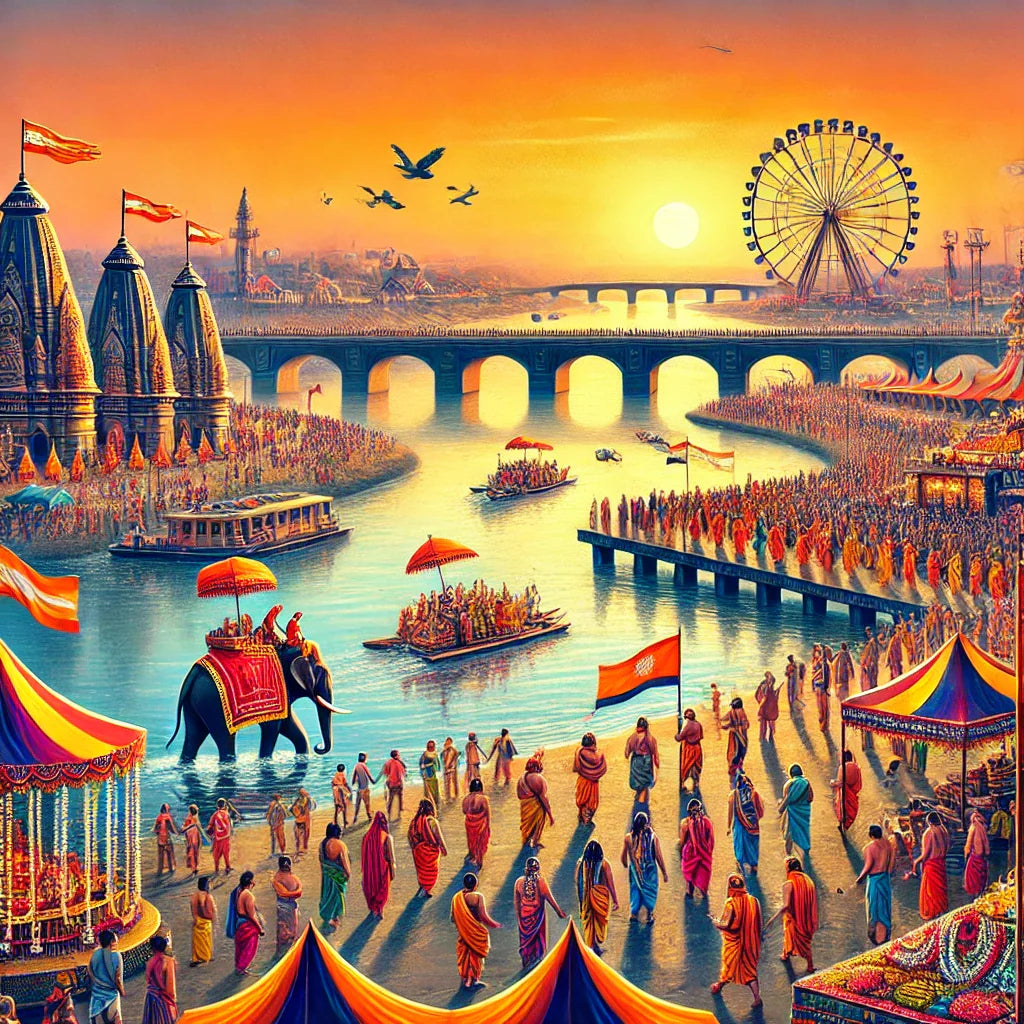
Kumbh Mela 2025: A Grand Confluence of Faith and Culture
Share
Kumbh Mela, revered as one of the world's largest religious gatherings, is a profound manifestation of India's rich spiritual heritage. Held every twelve years at the sacred confluence of the Ganga, Yamuna, and Saraswati rivers in Prayagraj, Uttar Pradesh, this festival attracts millions of devotees seeking spiritual purification and enlightenment.
Significance of Kumbh Mela
The origins of Kumbh Mela are deeply embedded in Hindu culture. According to legend, during a cosmic battle between gods and demons over the elixir of immortality (Amrita), a few drops fell at four earthly locations: Prayagraj, Haridwar, Ujjain, and Nashik. These sites have since become pivotal pilgrimage destinations, hosting the Kumbh Mela in a rotational cycle.
The festival's name, "Kumbh," translates to "pitcher," symbolizing the vessel that contained the divine nectar. The act of bathing at the Triveni Sangam during Kumbh Mela is believed to cleanse one's sins and liberate the soul from the cycle of birth and death, offering a path to Moksha (salvation).
Kumbh Mela 2025: Dates and Duration
The Maha Kumbh Mela in 2025 is scheduled from January 13 to February 26, spanning 44 days of spiritual fervor and cultural festivities. This edition is particularly significant as it marks a once-in-144-years event, amplifying its spiritual importance and expected to draw an unprecedented number of pilgrims.
Key Rituals and Events
- Shahi Snan (Royal Bath): The most auspicious ritual, where ascetics, saints, and members of various Akharas (religious orders) take a ceremonial dip at the Sangam. The Shahi Snan is a grand spectacle, symbolizing the commencement of the Kumbh Mela.
- Pravachan and Kirtan: Spiritual discourses and devotional singing sessions conducted by revered saints and scholars, offering insights into Hindu philosophy and promoting communal harmony.
- Yagna and Aarti: Fire rituals and evening prayer ceremonies performed to honor deities, seeking blessings for prosperity and peace.
- Processions: Vibrant parades featuring sadhus, adorned elephants, horses, and devotional music, reflecting the rich cultural tapestry of India.
Preparations and Infrastructure
Organizing an event of this magnitude necessitates meticulous planning and extensive infrastructure development:
- Accommodation: A vast tent city has been erected to house millions of pilgrims, equipped with essential amenities to ensure comfort and safety.
- Sanitation: Over 150,000 portable toilets and numerous sanitation facilities have been installed to maintain hygiene standards.
- Security: Deployment of approximately 50,000 security personnel, supplemented by AI-equipped surveillance cameras and drones, to monitor crowd movements and ensure safety.
- Transportation: Enhanced connectivity with special trains, buses, and the construction of temporary pontoon bridges to facilitate the movement of pilgrims.
Cultural Significance and Global Recognition
Kumbh Mela is not merely a religious congregation but a vibrant cultural festival that showcases India's diverse traditions, art forms, and communal harmony. In 2017, UNESCO recognized Kumbh Mela as an "Intangible Cultural Heritage of Humanity," underscoring its global cultural significance.
Participation and Experience
Attending the Kumbh Mela offers a unique opportunity to immerse oneself in spiritual practices, witness age-old traditions, and experience the collective devotion of millions. Pilgrims and tourists are advised to plan their visit in accordance with the key bathing dates and make necessary arrangements for accommodation and transportation in advance.
Conclusion
The Maha Kumbh Mela 2025 stands as a testament to India's enduring spiritual legacy and its capacity to unite people across diverse backgrounds in a shared quest for enlightenment and salvation. As the sacred waters of the Sangam embrace millions of devotees, the festival reaffirms the timeless values of faith, devotion, and communal harmony that continue to inspire humanity.
